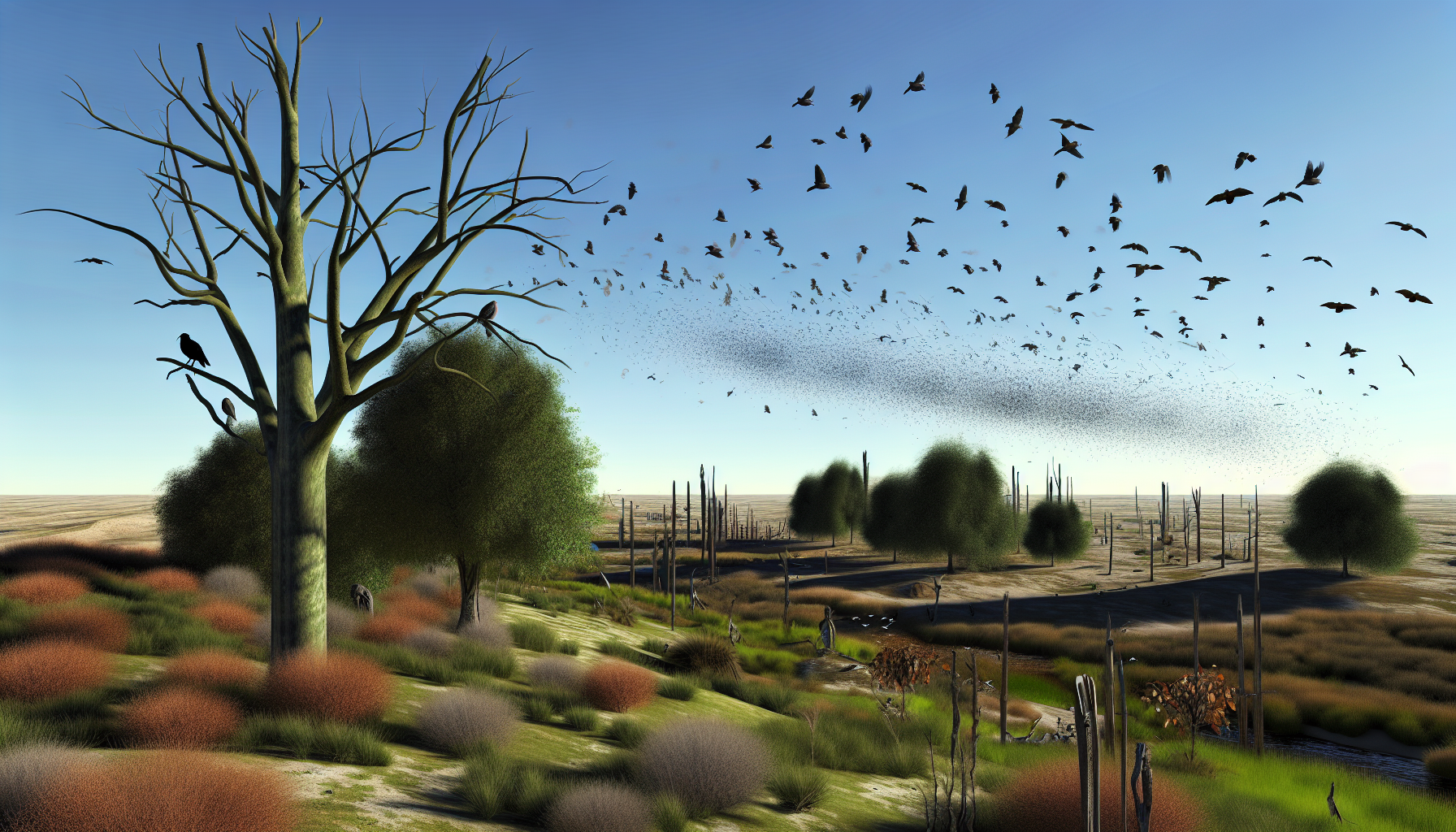Enter a world where the morning no longer greets you with melodic choruses, where the spring feels as though it has lost its spirit of rebirth. This is the dystopian reality we are facing in our latest environmental tragedy—a world without birds. It’s a colorless chapter in the book of our planet, a tale of voids and shadows where once iridescent wings spanned sunlit skies.
‘Faded Rainbows’ is not just a term to describe the dimming palette of nature; it’s the visual manifestation of an ecological breakdown. Birds, the artist of our natural landscapes, have ceased their infinite brushstrokes upon the skyscape. Once rich in hues of blues, reds, and yellows, our surroundings have faded into a monochrome existence without our winged artisans of color.
The irresistible plumage coloration of birds was not merely an aesthetic splendor. It played a pivotal role in the flow of life—an intrinsic part of pollination, seed dispersal, and the fabric of ecological interactions. The absence of birds means that entire floral networks are crumbling. Not only do we lose the visual banquet birds provide, but this deficit also impacts the reproductive cycles of numerous plants, causing a domino effect of decline throughout entire ecosystems.
We’ve delved deeper into the lifeless and silent woods to paint a detailed scene of the repercussions. Imagine woodlands where the flare of cardinals no longer dances through the trees, meadows now silent where meadowlarks once sung, and coastal cliffs devoid of the vibrant puffins’ parade. The glittering presence of hummingbirds, pivotal in the spread of color from one blooming coronet to another, is a spectacle that future generations might only witness in the static pages of history books.
A study from the Institute for Biodiversity and Ecosystem Dynamics stands grim: proliferating ‘green deserts’ are spurring from the loss of flora and fauna diversity. Reports show a noticeable dulling of natural terrains, as plant species unable to adapt or reproduce without their avian counterparts wither into oblivion. As these botanical tapestries fray and fade, pest species burgeon unchecked by the predatory roles birds once held.
But what of human interaction with these winged creatures? Our connection extends beyond the confines of admiration and poetry. Birds play a role in our very sustenance. Their diminishing numbers contribute to the interruption of nutrient cycles and agricultural productivity. This loss bears down an unseen weight on our food security, like the subtle yet relentless force of gravity pulls to earth what little remains—faded rainbows and all.
This decline of bird populations mirrors our own decline. It is as though the vibrancy of life itself is slowly being siphoned away, leaving behind an environment of ghosts. Yet in these pages, we do not seek to offer redemption from this fate but instead present a stark reflection—a tableau of what is and what may never again be.
As we conclude this exploration, let us linger in the unspoken query that hangs heavier with each subsequent revelation: what does this color drain signify for the future of our natural world? A future ceaselessly plummeting towards entropy, now hastened by our prolonged disregard for its most vivid sentinels—the birds whose wings no longer beat against the coming of the night.
